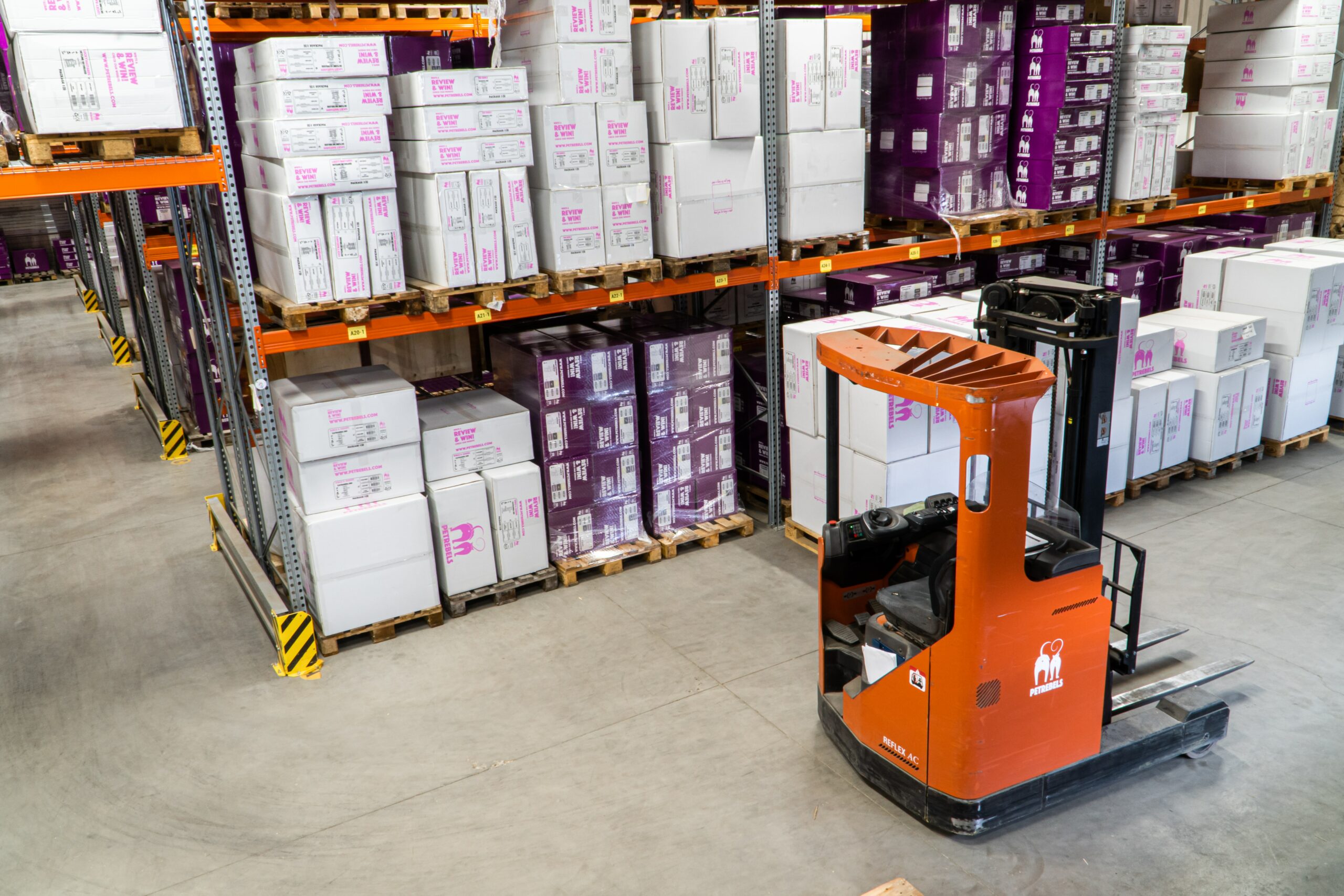Tips on Handling Supply Chain Shortages
With COVID-19 impacting the supply chain across the globe, hundreds of thousands of sellers face product shortages daily. If you’re like most merchants who have trouble sourcing products, you know how challenging of a situation it is. Manufacturing has slowed down, and both the sellers and consumers have felt its lingering effects.
Adapting to complex situations separates a thriving business from a failing one. How do you address the supply chain issues to ensure you meet consumer demand? In this article, we’ll discuss a couple of tips that you can use to handle supply chain shortages and keep your business afloat during the pandemic.
How the pandemic has affected the supply chain globally
Global supply chains continue to face unique logistical challenges brought about by COVID-19. Fluctuating consumer demand, workforce reduction, material shortages, and disrupted shipping lanes have devastated companies from left to right. There’s no certainty when the supply chain will go back to normal, but companies will need to adjust accordingly until then.
According to Zippia, 28% of global retailers faced product shortages due to the pandemic, and 12% of retailers reported severe disruptions in their supply chains. Supply chain operations have become increasingly costly, and because of the lack of workforce, skill gaps across the supply chain are causing companies to rely heavily on their staff.
The biggest challenge for companies is to make their supply chains resilient while remaining competitive in their field. To do that, managers should closely look at their supply chain and determine which areas they can improve.
1. Evaluate your supply chain
The first thing you need to do is evaluate your supply chain’s current state. Where does the manufacturer source the materials? And how much do the products cost? Identifying gaps in your supply chain is key to overcoming shortages and making the correct adjustments.
For example, if you can afford to pay for the material costs and make larger purchases, make a move and stock up as much as you can. Or, if you can spend more for faster shipping, you can address late deliveries and satisfy your customers. Almost every seller is facing product shortages from their manufacturer, and if this is the case, you may want to look for alternative options.
If your local manufacturer doesn’t have materials available, you can source them from international suppliers. Sure, it may take a bit longer to acquire the products, but it’s better than not being able to sell products at all. Diversify your product/material sourcing so that you’ll have an alternative to fall back on if product shortages happen.
2. Source alternative materials
With material shortages hampering product manufacturing, now is the perfect time to explore various materials for your products. The material you’re using now has skyrocketed in price, and if you’re facing this dilemma, you need to think outside the box. For example, if you’re struggling to acquire cotton fabric for your clothing, you can try forest-friendly alternatives like recycled polyester or soy fabric.
The same thing applies to your packaging. Packing peanuts and bubble wrap is hard to come by nowadays, so to keep your products safe during shipping, try using recycled paper or cardboard. It’s about being creative and identifying alternative options to continue manufacturing your products.
Of course, the sudden changes in the material will affect your consumers. Before you switch to new materials, consider notifying your customers in advance and explain the reason for switching. That way, you can manage their expectations and help them understand the position you’re in as a seller.
3. Fine-tune your inventory management
Managing your inventory is crucial to keeping your business afloat. Thus, you must fine-tune your inventory to ensure your products are readily available. First, take a look at your warehouse or fulfillment center and note down which products are in stock. If a specific product is becoming difficult to source and you only have limited stock on hand, you can temporarily mark it as out of stock and wait until new stock arrives.
Our recommendation is to use an inventory tool to facilitate and automate the process. There are plenty of inventory management tools available online, the most notable being Orderhive. Explore your options and use inventory tools to ensure your stock is constantly updated.
4. Stay one step ahead
Part of adapting to the disrupted supply chain is inventory forecasting. When product availability is unpredictable, the last thing you want is to wait until your stock is out before ordering. Inventory forecasting ensures that you keep safety stock at a realistic threshold, which leads to better customer satisfaction and improved supply chain management.
Although there’s a gut feeling involved in inventory forecasting, you can make sound predictions by measuring sales trends, calculating lead time demand, and setting reorder points. With inventory forecasting, you save on warehouse costs, which you can then allocate to bulk purchases of materials or products.
5. Adjust your product’s pricing
Maintaining profits can be difficult when the materials you’re using have skyrocketed in price. To ensure healthy profit margins, consider adjusting your product’s prices accordingly. Manufacturing, labor, and material costs have jumped up since the pandemic started, and these changes should reflect on your product’s price.
You’ll need to consider a couple of factors when raising your product’s price, and these are warehouse costs, shipping fees, material costs, and product demand. Once you’ve adjusted your pricing, notify your consumers in advance. You can do this by sending email newsletters to your subscriber list or posting a notice on your website.
Price increases can be confusing to consumers, but they’ll understand the reasoning behind it if you can communicate with them effectively.
6. Take advantage of waitlists
Aside from inventory forecasting, one way to better manage your stock is through waitlists. Waitlists allow you to plan for a product’s demand, especially when restocking your inventory. When you create a waitlist, you send a message to your customers that the product has limited availability. Your loyal customers won’t have any problems waiting for the product to restock, considering the state of the supply chain today.
Limited stocks don’t have to result in lost sales. With a waitlist option in your store, you can keep customers updated on product availability and gauge the interest of potential buyers. In addition, waitlists ensure customers will buy from your store and not source the product from another seller.
7. Minimize waste on your fulfillment process
Given the circumstances that sellers are dealing with, you must maximize every material and product available. Take a look at your fulfillment process and highlight key areas to minimize waste. For example, you can consider palletizing your products for more efficient storage and transportation. Another example is limiting product returns by writing clear product copy and providing accurate descriptions of your items.
Improving quality control is also an effective way of minimizing fulfillment waste. When a company enhances its manufacturing process, less waste is produced, thus leading to more products that will pass quality inspections.
8. Have an emergency plan ready
Almost everyone was caught off-guard when the pandemic wreaked havoc across the global supply chain. While an emergency plan won’t alleviate all your problems, it will help to minimize the effects of an unstable supply chain. Make sure to plan alternate shipping routes and consider multiple inventory/shipping options so that your business can remain flexible during unforeseen events.
9. Openly communicate
When faced with a disrupted supply chain, one thing you need to do is to keep everyone on the same page. Contact your employees if you need to re-arrange your in-house operations. Reach out to a new supplier if the product/materials you need are unavailable. Notify your fleet before rerouting your distribution team. When everyone is aware of what’s happening, each member can help with streamlining operations.
In summary
COVID-19 has impacted the global supply chains in ways we’ve never imagined. But the good news is that supply chain leaders have demonstrated the grit, resilience, and flexibility to overcome the challenges. Maintaining essential operations is crucial to keeping your business afloat, and handling supply chain shortages ensures your business stays relevant despite the uncertainties.
Investors and consumers alike will judge a company’s values based on how well they handle the supply chain disruption. If you can find ways to limit the impact of the supply chain in your business, you will position yourself in a better place ahead of your competitors.
Companies can reposition themselves for growth by taking the right actions once the economy rebounds. Make sure to implement these nine tips into your supply chain for increased flexibility and sustainability.
As an e-commerce seller, you need to know how well your business performs financially. You can measure your company’s financial performance and ensure profitability with proper bookkeeping. If you need professional and reliable bookkeeping services, feel free to fill out the form below, and our team will contact you shortly.








